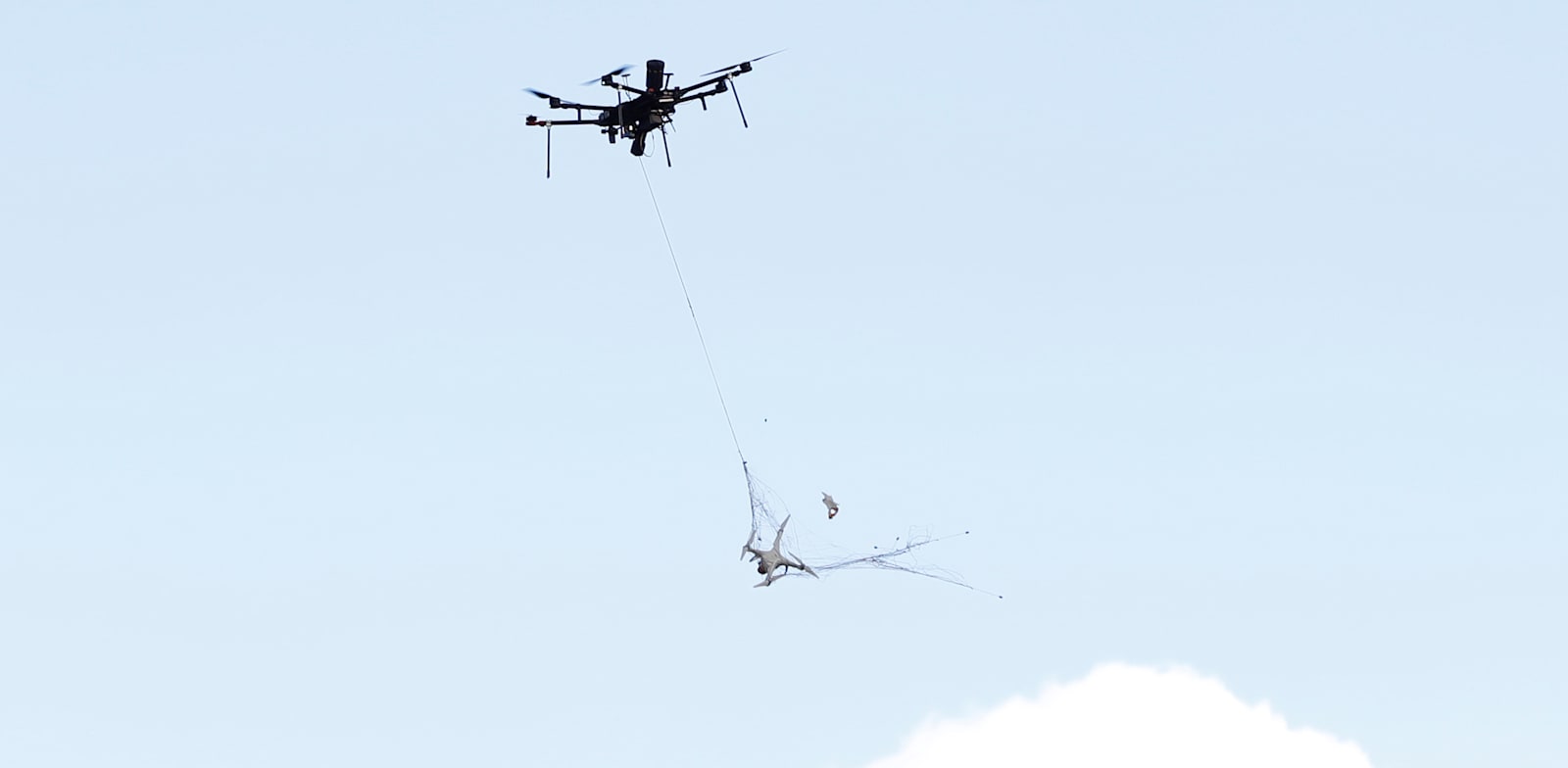Russia has launched the “Netcomet” UAV interception system, which is designed to help deal with the large number of aircraft in Ukraine’s possession. Ukraine to use – following its availability in the market.
These drones made by the Chinese giant are relatively cheap and allow you to carry loads with them. They come on their own with a good camera, and it is also possible, if necessary, to turn them into a suicide UAV (roaming weapon) along with a tiny payload. The interesting issue concerning the Russian “Netcomet” system is that it is actually an accompanying payload for the UAV. That is, a situation could arise in which a DJI duster drone of the Russian army intercepted a similar model of the Ukrainian army.
The Russian system is far from a global precedent. The Robotichan company from the town of Omer produced the “Angry Birds” drone, which is equipped with a dedicated net for capturing drones. The purpose behind it is to create a means to be used in populated areas, such as settlements near a fence, where they are not interested in neutralizing with the help of explosive means. The drone, which may save Iron Dome launches that are estimated at about 30 thousand dollars, can leave from the roof of a house – and capture the drones.
Other parallels exist in different countries. In Japan, for example, means of capturing drones are used to secure public events and critical infrastructures. Another country that uses such capabilities is the United Kingdom, which has both military and civilian capabilities to capture drones using nets. However, the uniqueness of the Russian system is the ability to install it on almost any possible drone.
The “Bulgarian Military” website states that nets for capturing drones is one of the earliest methods tried in favor of interception. A major challenge in its application, similar to every aspect of air defense in a drone-saturated scenario, is the identification – and avoidance of interception by friendly drones. For this, an orderly array is required, which includes, among other things, radars and optical sensors, because the deployment of such capabilities without deep thought may cause more harm than good.
One of Israel’s solutions for shooting down drones
In order to create as high an efficiency as possible, Israel is working to re-implement Vulcan cannons for the benefit of intercepting UAVs. A Vulcan cannon, or as it is called in Israel, a racket, is based on a Gatling machine gun (M61A1) manufactured by General Dynamics. The Israeli anti-aircraft system has been active since 1975 companies that used Vulcan cannons, mounted on M 113 (“Zelda”) APCs, alongside a Stinger missile launcher, a dedicated radar, a day and night observation system, a tracking system and a fire control computer. In 2006, after the Second Lebanon War, it was decided to give up this ability – while drawing attention to technological progress.
Now, the defense establishment understands that there is a security and economic benefit from implementing Vulcan for intercepting UAVs. Market sources stated in a conversation with Globes that a bullet for Vulcan costs $6-10, depending on factors such as period, supply and demand, country of manufacture, the manufacturer itself and the nature of the procurement contract. “About 400 bullets are required for an aerial target of the RoK type, so intercepting a UAV should not exceed 4,000 dollars,” says a source in the market. That is, about 14.8 thousand shekels at most – compared to about 30 thousand dollars for each interceptor Iron Dome.
For your attention: The Globes system strives for a diverse, relevant and respectful discourse in accordance with the code of ethics that appears in the trust report according to which we operate. Expressions of violence, racism, incitement or any other inappropriate discourse are filtered out automatically and will not be published on the site.
